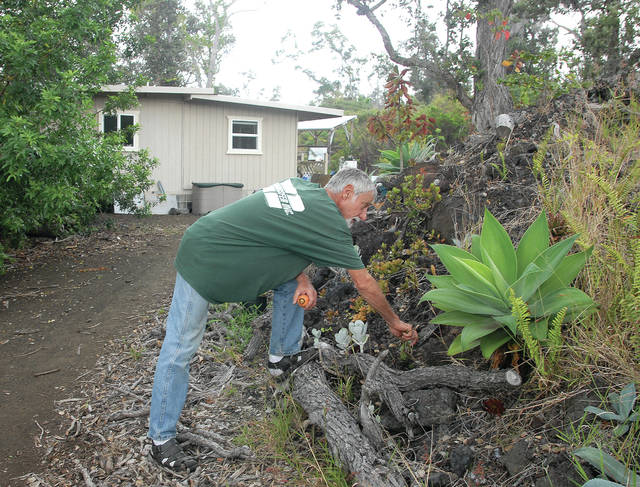KAILUA-KONA — A panel of economists from across the state delivered a two-part message to the House Committee on Economic Development and Business Wednesday morning at an informational meeting regarding the cost of living in Hawaii. ADVERTISING KAILUA-KONA — A
KAILUA-KONA — A panel of economists from across the state delivered a two-part message to the House Committee on Economic Development and Business Wednesday morning at an informational meeting regarding the cost of living in Hawaii.
First, the primary factor driving the high cost of living in the state is the price of housing. Second, the best solution to at least stem that cost is to create more housing inventory.
“Basically, we need to do whatever we can to build more housing,” said Carl Bonham, professor of economics and executive director of the the Economic Research Organization at the University of Hawaii. “Even if we do that … we may not bring down the cost of living. On the other hand, if we don’t build more housing, the number will get worse.”
Bonham added to accomplish this, onerous regulatory burdens to residential development in Hawaii must be lightened, reducing the number of approvals required to build.
“(There is) a very strong correlation between regulatory burden and volatility (of home prices) and overall level of home values,” he said.
There are no bills currently in the Hawaii State Legislature geared specifically at deregulating housing markets in Hawaii.
Based on numbers presented by economist Paul Brewbaker, of TZ Economics, the cost of living statewide is 17 percent higher in Hawaii than the national average.
According to Brewbaker’s analysis, this is tied mostly to housing, as the differences in prices for goods and services are relatively negligible between Hawaii and other states.
Housing has consistently proved the culprit for Hawaii’s high cost of living over the last half century, Brewbaker said, adding that by early next decade, he projects roughly one-third of homes in the state will be trading at $1 million or more.
Real housing prices are rising at about 2 percent annually, but household incomes haven’t kept pace.
“I think it’s particularly troublesome that in last two decades or so, the growth of income per capita … in real terms has been much lower here in Hawaii — lower than it used to be, lower than it is nationwide, and lower than the real rate of increase of home prices,” Brewbaker said. “We’ve been helped out basically over the last couple decades by falling interest rates.”
Rep. Mark Nakashima — Hamakua, North Hilo and South Hilo, who serves as Chair of the House Committee on Economic Development and Business — said he’d hoped to explore other mechanisms beyond creating more inventory to control housing affordability.
“Building more is one of the answers, but I think there needs to be multiple tools out there,” he said. “I have communities on Hawaii Island virtually empty throughout the year, then suddenly in winter time for two to six months, it’s the second largest town in the state.”
Representatives posed questions to the panel regarding increased property tax rates, some forms of which could be geared at mainlanders and non-U.S. citizens purchasing residential properties in Hawaii.
“We don’t have a mechanism where we can just say, ‘OK, you’re from the mainland. We tax you more,’” Bonham said.
James Mak, professor emeritus with UH-Manoa’s Department of Economics, returned questions about the legality of such measures.
Mak said it was unclear whether it would be constitutional to impose a tax geared at residents of different states, while multiple economists on the panel spoke about violations of investment agreements between the U.S. and several other countries based on the notion of avoiding discrimination and encouraging foreign investment in both directions.
Furthermore, Mak said, such taxes wouldn’t likely be enough to stem housing costs by limiting demand. Roughly 75 percent of homes purchased in Hawaii are bought by residents, although those numbers are skewed somewhat by the high number of residents who own homes on Oahu.
On Hawaii Island, for instance, roughly 57 percent of residential purchases are made by full-time residents, according to numbers presented by Dr. Eugene Tian, another economist on the panel.
“(Looking for solutions on) the demand side is probably not going to have the effect you desire,” Mak said. “The supply side of the solution is the more practical solution.”
Bonham agreed that property tax increases, which are a purview of Hawaii’s county governments and not the state to begin with, are the wrong path to tread.
Rather, some of the economic benefits Bonham said would come with increased housing inventory would be a nearly 1 percent bump in employment growth and labor earnings over the next decade, during which time UHERO projects the state will fall at least 33,000 housing units short of meeting demand.
Currently, Hawaii offers 372 units per 1,000 residents. The average for the Unites States is 419 units per 1,000 people.
Bonham did say it would make sense to specifically legislate vacation properties, developing a cap and aggressive tax structure for such properties.
Brewbaker agreed, saying companies like Airbnb aren’t going anywhere and the mobility of U.S. citizens is increasing, meaning the trend of vacation rentals soaking up housing inventory is likely to persist.
He suggested Hawaii Island specifically as a place where housing inventory could be expanded.



